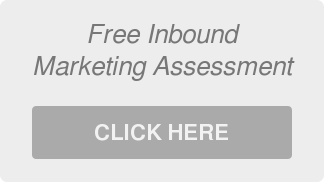 From flywheels to inverted funnels, the buyers journey continues to evolve. What we can say for sure is that each prospect experiences an awareness, evaluation and purchase stage in their decision-making process. Content has become a major part of all types of marketing and has a profound impact on your company’s ability to draw in prospects and close deals. Knowing what types of content best fit each stage of the buyer’s journey is key to the effectiveness of your campaigns. Here we break down the best pieces to use in each stage of the funnel.
From flywheels to inverted funnels, the buyers journey continues to evolve. What we can say for sure is that each prospect experiences an awareness, evaluation and purchase stage in their decision-making process. Content has become a major part of all types of marketing and has a profound impact on your company’s ability to draw in prospects and close deals. Knowing what types of content best fit each stage of the buyer’s journey is key to the effectiveness of your campaigns. Here we break down the best pieces to use in each stage of the funnel.
Top
At this stage in the funnel prospects are just beginning to look for answers to specific pain points that their company is experiencing. A focus on educational content is the best way to bring attention to your solutions.
- Blog Articles – blog articles are one of the best ways to educate your prospects on your solutions and draw them to your website. Each blog post should contain a call to action that leads them to a landing page with a premium offer.
- eBooks – eBooks are meant to teach a prospect about a particular subject relating to their business in a more in-depth manor than a blog post. They should be educational and entertaining and gated by a form to convert your website visitors.
- Whitepapers – Whitepapers tend to be more technical than eBooks and dive into specific solutions for a pain point. They are more narrowly focused than eBooks and should also be gated in order to convert website visitors.
- Checklists – Checklists can be in the form of a blog article or a pdf and are meant to help organize and optimize a particular part of a prospects business. More intricate designs can be gated with a form, but in general they should not be.
- Infographics – Infographics are a great way to convey complex ideas and statistical information in a visual format that makes them more easily digested. They are some of the most shared pieces on social media and can greatly improve the reach of your content.
- How To Videos – How to videos are a great way to educate your audience while also helping to personalize your brand. Content from your blog articles, eBooks and whitepapers can be used to create these videos and as always, a call to action should be included.
- Educational Webinars – Webinars continue to gain in popularity within the B2B technology industry. Top of the funnel webinars should be purely educational and not promotional. They are a great way to engage your prospects and allow them to ask questions in a real time open forum.
- Social Posts – All of the above pieces of content can be used as social media posts but there are others as well. Entertaining memes, microblogs and surveys are all viable means of bringing attention to your business.
Middle
This is the point where a prospect has determined their main pain point and are actively looking for a solution. You have gained their attention in some way and now it’s time to show how your solutions will best fit their needs.
- Product Webinars – A product webinar is meant to show the benefits and uses of a particular product as well as showing how to implement it. This is an opportunity to showcase your product and answer questions specific to your solution.
- Demo Videos – A video demonstration on how to use your product can be extremely effective in showing the simplicity of use and explaining differentiators from similar products. These videos can be distributed through a variety of channels and housed on your product pages.
- Case Studies – Case studies serve as a testimonial of how your product or service has impacted a previous customer. These can be as short as a couple of pages and either gated or not. They also make great fulfillment pieces for your marketing emails.
- FAQ’s – Addressing frequently asked questions within a blog post or on a static website page is a great way to clarify what your solution has to offer. These can be developed by looking into the most common questions discovered during prospecting and discover calls.
Bottom
It is at this point that a prospect is ready to make a purchase decision. They may be evaluating several companies similar to yours, so now is the time to put the right content and offer in front of them.
- Free Trial – Allowing your prospects to experience your product hands on and include it in their process for a period of time gives them a chance to see the benefits themselves. In some cases, your prospects will wonder how they ever lived without it, making the sales process that much easier.
- Live Demo – A live demo functions much in the same ways as a demo video but with a more hands on approach. When a prospect has the opportunity to use your product and become comfortable with it, they are much more likely to realize the benefits.
- Consultation – Simply offering up your expertise and going into detail about how your product stands to benefit a certain company specifically will ease the minds of your prospects prior to making a purchase decision.
- Estimate – Price is still a key factor in the purchase decision process and letting a prospect know exactly what they can expect and for what price will go a long way toward closing a deal.





